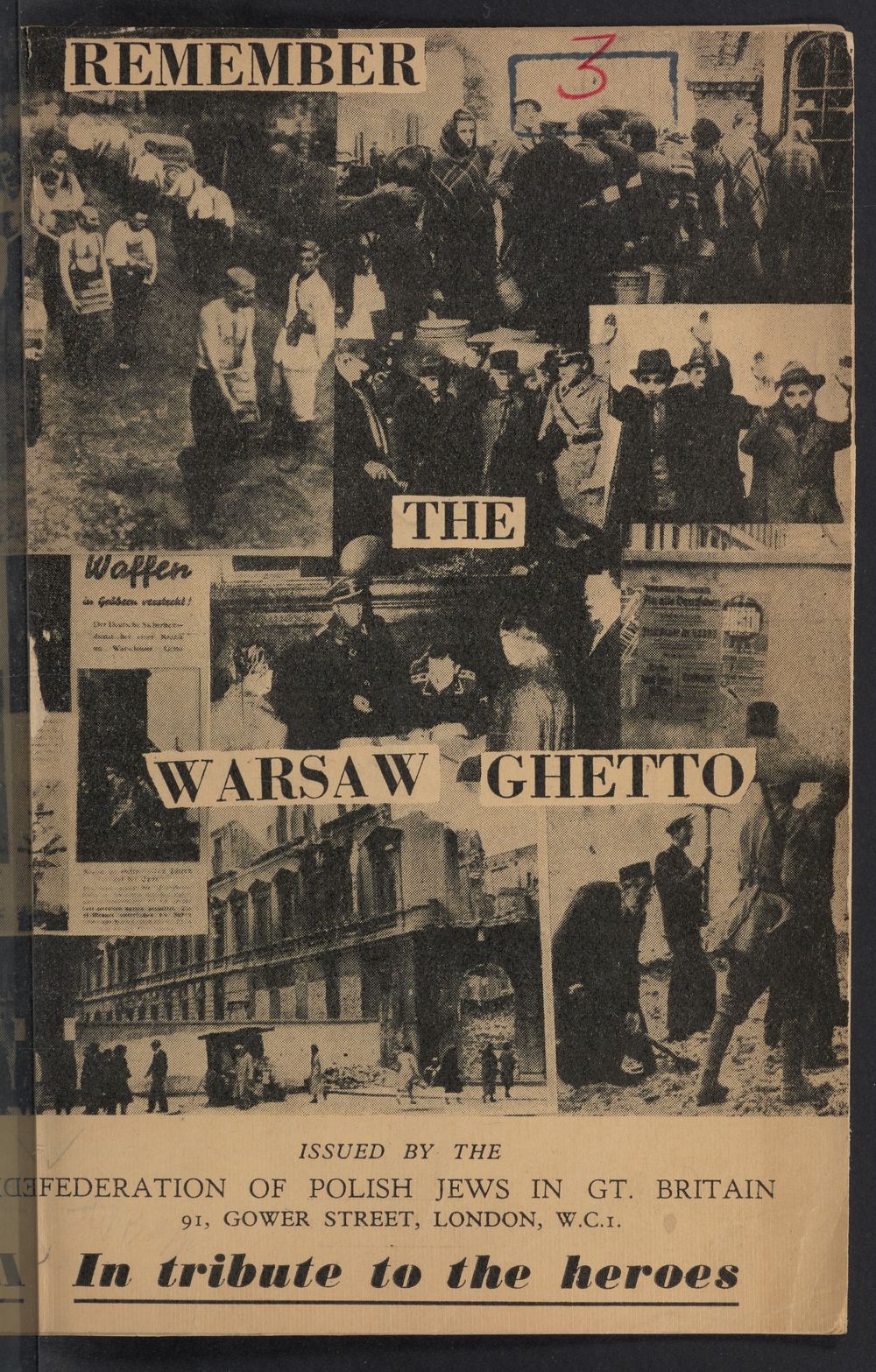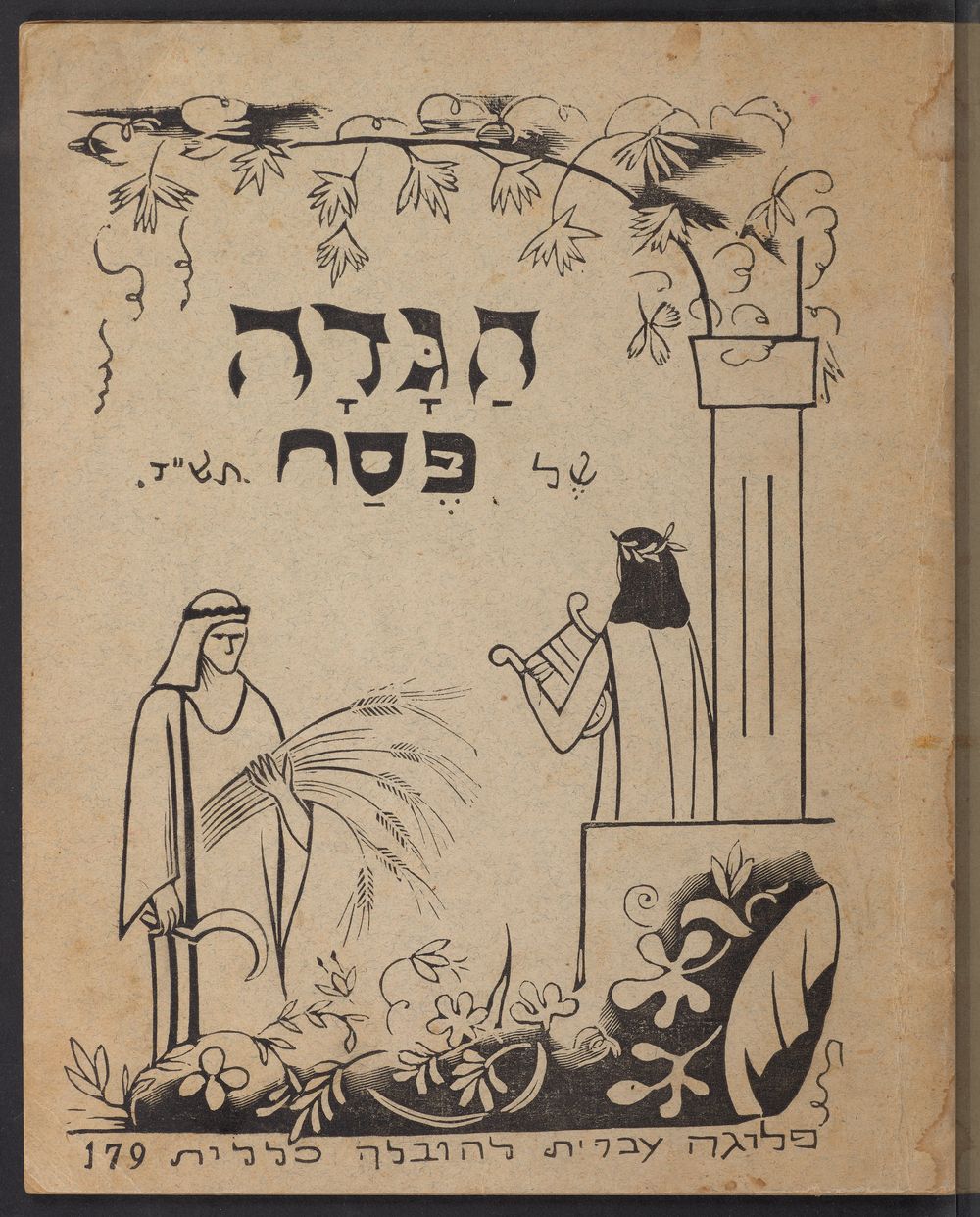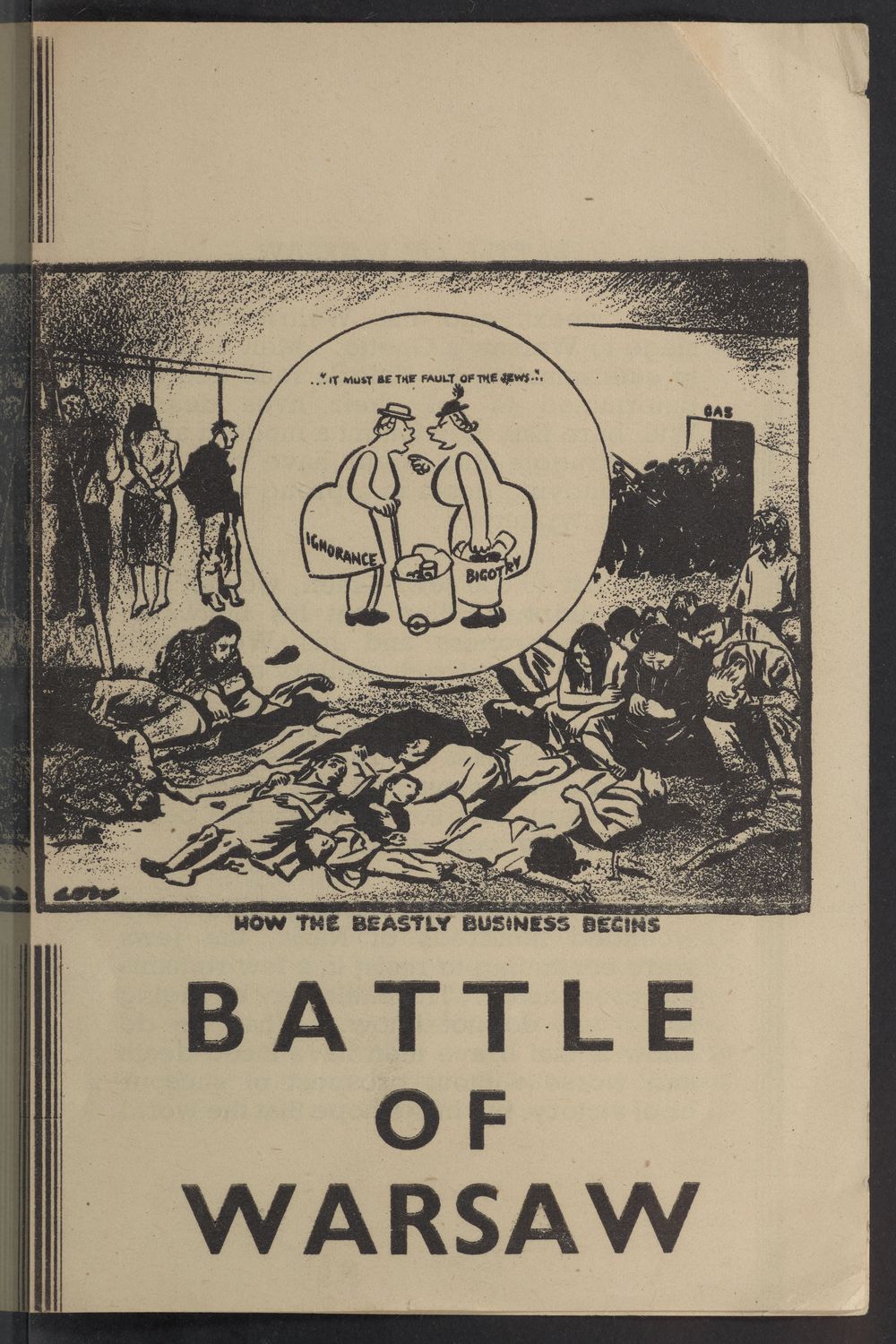Armed Resistance
The items on display here document Jewish armed resistance to the Nazi oppression.
Remember the Warsaw Ghetto, 1944
This booklet was issued to commemorate the first anniversary of the Warsaw ghetto uprising and provides detailed information about the battle. It includes a long list of names of those killed in the uprising. This is one of the earliest detailed accounts of the uprising.
Hagadah Shel Pesach 5704, Royal Army Service Corps, 179 General Transport Company, 1944
“We are dining together, Jewish soldiers from all over the diaspora. Our hearts are celebrating [Passover], but our hearts are also agitated. Our hearts are agitated because Egypt is not yet finished with Israel. Because the whole world is our Egypt.” Thousands of Jews from British Mandate Palestine volunteered to serve with the British Army in a “Jewish Brigade” during the Italian Campaign during the Second World War. This Haggadah was written and used by members of that brigade during the Allied advance into Italy. It combines the traditional text with references to the battles these Jewish soldiers were then fighting. The text metaphorically compares Egyptian slavery to the Nazi destruction of European Jews.
Ha-Kipah Ha-Kehulah (The Blue Cap), 1945
This Hebrew children’s book, published in Tel Aviv as the Holocaust was ending, provides a resistance rather than a victimhood narrative. The main character, a young Jewish girl, saves the lives of many Jewish children by uncovering the Nazis’ plan to kill them, and then fighting with the Jewish resistance to foil those plans.
Battle of Warsaw, 1943
“The battle may be raging still; we do not know.” This pamphlet was issued weeks after the end of the Warsaw ghetto uprising, although its author did not yet know that it had ended. The text provides a spare description of the battle as the details were not yet fully known. Poignantly, it states that the Jewish fighters are facing death not to win the battle, but “in the hope that the world will be stirred to swifter action against Nazis now seeking to destroy the soul of a nation.”
The Battle of the Warsaw Ghetto, 1945
This early account of the Warsaw ghetto uprising provides details about the Holocaust, while it was still occurring, including references to gas chambers at Treblinka. This document’s existence disproves the notion that the world did not know the extent of Nazi crimes while they were happening. Its wide publication describing these crimes – this edition published in Shanghai a year after it was published in New York – illustrates the breadth of Jewish activism in response to Nazi oppression.
Ghetto Walczy (The Ghetto Fights), 1945
This memoir was written by the last surviving leader of the Warsaw ghetto uprising. In 1942, Marek Edelman founded the ZOB (Jewish Combat Organization), the group that organized the uprising. During the uprising, he succeeded its leader Mordechai Anielewicz after he was killed. After the war, Edelman remained in Poland and was active in the struggle against communism.





